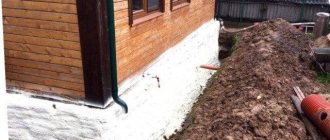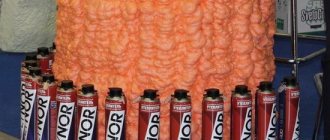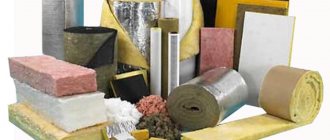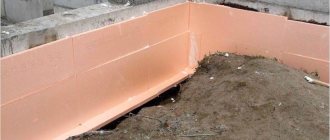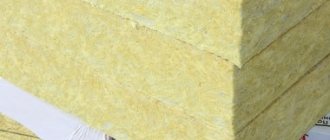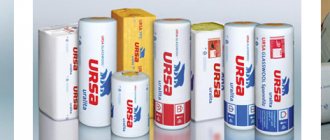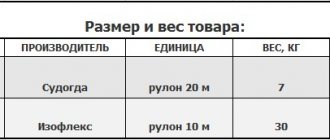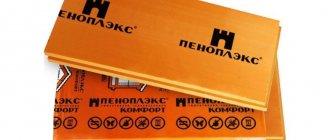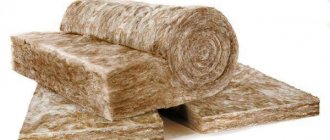The modern market of construction and finishing materials offers a huge number of insulation materials that differ in characteristics and performance properties. Polyurethane insulation Polynor is the most effective modern material used for thermal insulation of a home.
Polynor thermal insulation is a new product on the Russian construction market. It is a sprayed polyurethane foam that has excellent sound and heat insulation characteristics due to its composition, which is 90% air.
At the same time, it is extremely easy to install, which puts it an order of magnitude higher than other thermal insulation materials.
You will also be interested in reading the reviews about Polynor, which are at the end of the article.
Material advantages
Unlike similar insulation materials, liquid insulation has the following advantages:
- efficiency;
The energy saving coefficient when insulation is carried out with Polinor is higher than that of the so popular mineral wool.
- profitability;
For fastening, there is no need for the construction of an additional frame or the use of hydro- and vapor barrier materials, and there is also no need for special devices and costs for delivery to the repair site.
- ease of installation;
One person can spray the material. Its application does not require labor-intensive preparatory work, surface leveling, etc.
- minimum consumption;
The question of how much insulation is needed can be easily answered. One liter of liquid is enough to create a four-centimeter insulating layer on a surface area of 1 sq.m.
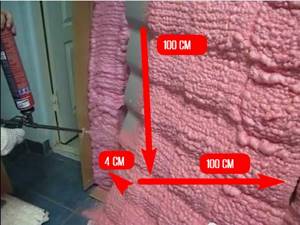
At the same time, the cost of such insulation is noticeably lower than the same mineral wool, which will require many additional materials (vapor barrier, waterproofing, sheathing, fastenings, etc.)
- excellent adhesion to any type of material;
- biostability and lack of condensation.
Along with a large number of advantages of Polinor insulation, it also has some disadvantages:
- negative influence of sunlight on it;
- deteriorates under constant exposure to water;
- when applied, requires a temperature of +15 to + 25 degrees;
- dangerous to the eyes and respiratory system (use of a respirator and safety glasses is required).
How to properly insulate a log house
A year after building the house, you can start insulating it. During this time the log house will settle. First you need to close all the cracks in the walls of the log house. How to find them? A proven method is to take a candle and walk around all the walls of the house with it: if the fire deviates to the side, there is a gap somewhere. If in winter there is frost on some part of the wall, the heat goes away. You can close the cracks using tow, jute, hemp or roll insulation. Place the material between the logs and push it as deep as possible using caulk.
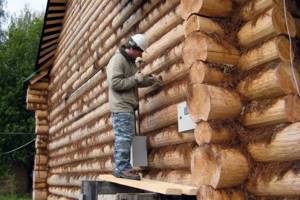
To properly insulate a house from the outside, you need to make a superstructure in which the insulation will be located - a “ventilated facade”. First, treat the outside of the house with an antiseptic; this will protect the wood from mold and insects. Attach the sheathing, it makes it easier to install the insulation.
Mineral wool or polyurethane foam are suitable for thermal insulation. Both materials release moisture, are resistant to high temperatures and meet environmental safety requirements. The thickness of the insulation layer depends on the region of residence. The colder it is outside in winter, the thicker the insulation. The maximum value is 70 millimeters. Average - 50 millimeters. To do this, polyurethane foam needs to be sprayed in two layers of 25 millimeters each.
After the insulation is installed, you need to make waterproofing. It will help maintain moisture exchange between the wall of the house and the street and prevent water retention inside the structure. To do this, you need to use a waterproofing diffuse membrane. It traps precipitation and condensation outside, but removes moisture from the inside to the street. Then install the sheathing and install siding or wood panels on top.
Basic properties of the material
Sprayed insulation Polinor. Its characteristics demonstrate excellent technical properties that exceed the properties of other materials:
| Parameter | Meaning |
| Density | 18-28 kg/m3 |
| Water absorption by volume | 0.02 |
| Coefficient of thermal conductivity | 0.023-0.025 W/mK |
| Temperature | From -25 to +120 °C |
| Coating thickness | 25-60 mm |
| Probable service life | 35 years |
| Polymerization rate at t=20 °C | 40 min |
| Complete drying time | Up to 3 days |
| Failure due to compression, shear. | Missing up to 50% |
| Flammability group | G3 |
Polynore installation
Since the sprayed heat insulator Polynor is toxic during operation, installation of insulation is carried out in personal protective equipment: goggles, suit, respirator, gloves. Before installation, it is important to remove dust from the surface to be treated.
Then the surface is degreased with any organic solvent. Since polynor insulation has excellent adhesion, the evenness of the insulated surface only affects foam consumption. It is also necessary to protect non-insulated surfaces from foam splashes.
The installation of battens and frames for thermal insulation is not required, however, if a curtain wall is planned, the frame for it must be installed before insulation is carried out.
The heat insulator is installed as follows:
- Screw the nozzle supplied with the cylinder onto the barrel of the gun until it clicks, then remove the cap from the cylinder and polynore, and screw the gun rod into the cylinder itself;
- shake the container for 2…3 minutes;
- a stream of foam is directed to the required area.
Without minimal experience, it may be difficult at first to achieve uniform layer thickness, which is adjusted by tilting the gun nozzle. It is recommended to shake the container periodically. After completing the work, the tools must be washed with a special cleaner, since frozen foam is almost impossible to clean.
Polymerization occurs within 40 minutes, final hardening occurs after 3 days. The use of special films and membranes for vapor barrier is not necessary, which also reduces the cost of thermal insulation.
Scope of application
The description of the insulation presents us with a modern, almost universal material, which has a fairly wide application as a finishing and insulating material, in particular:
- for facades for finishing;
- for foundations and attics;
- for balconies;
- for insulation of internal walls of a building, partitions in various buildings;
- to isolate communication systems;
- in vehicles with isothermal functions.
As you can see, the application is wide. And this is understandable, since the heat insulator has good performance properties, fits perfectly on any surface, is very flexible and is not subject to destruction, even if a crack appears on the surface. The material is non-toxic and perfectly absorbs sound and vibration waves.
Release form
Sprayed insulation has been known since 2013. It is a one-component self-expanding mixture with a closed-cell structure.
In construction stores, this thermal insulation is sold in cylinders similar to conventional foam for a gun.
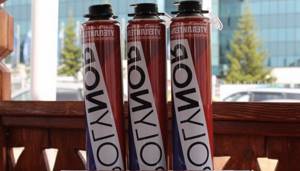
It is applied in the same way as construction foam. According to reviews, one cylinder is enough for a 5-centimeter layer of insulation over an area of one square meter. The manufacturer's instructions state that the service life, in the absence of exposure to negative factors, will be at least 35 years.
Installation features
Cylinders with insulation must be kept in a warm room until they are used. This is an important point, since negative temperatures can have a bad effect on the characteristics of foam insulation.
The thermal insulation mixture can be applied both to a clean surface and to the sheathing, it all depends on the chosen method of finishing the room. It adheres well to almost any materials. Spraying is easy, even with the hands of a non-professional.
In addition to the walls and facades themselves, Polynor foam can easily be used for thermal insulation of various communication pipes, well caissons and complex construction sites.
Before applying any insulation, including Polynor spray insulation, the surface is thoroughly cleaned of dirt and debris. If defects or damage to the surface are found, they should be repaired. A crack in the wall, for example, cannot affect the insulation in any way, but it may well spread under the insulation layer. Therefore, it is better to immediately begin repairing it using glue and cement composition.
Then the insulated surface is thoroughly degreased with special compounds. This must be done due to the fact that Polinor insulation does not adhere well to an oily surface.
Then spraying is carried out with an aerosol gun, to which is attached a nozzle for controlling the consumption of material and the supply of foam.
How to insulate with Polinor: the whole process and nuances
In fact, there is nothing complicated in this procedure. We prepare the surface and apply insulation evenly, in a small layer. The instructions are on the bottle.
Can be applied even in sub-zero temperatures! I applied Polinor at -5 degrees, although the instructions say that the minimum is +5 degrees. The most important thing is to warm the container to room temperature. You can keep it in hot water in a bucket and take turns taking the cylinders as you use them, you can put them on batteries at home and also use them in turn
- You need to prepare the surface. Clear of debris and dirt, dust and snow.
- We insert the can into the gun and apply it evenly over the surface in a small layer.
- When changing cylinders, we use a cleaner - we clean the nozzle and the place where the cylinder is screwed.
That's basically it, there's nothing complicated about it. We use it like regular polyurethane foam. But there are still a few nuances:
- Be sure to buy a new gun for Polinor, there will be fewer problems.
- The attachments that come with the cylinders may not fit the gun. I just heated it with a lighter and inserted it.
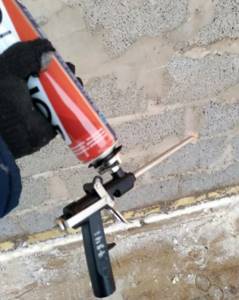
It is better to buy a new gun for working with insulation

What can I say - Polinor is fast, convenient and effective. If you have questions, ask in the comments.
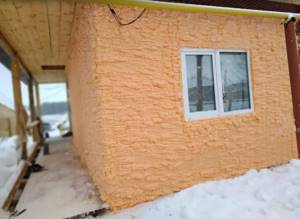
The result of the work done. It took about 4-5 hours to do everything
Professional advice and customer reviews
Over several years of use, Polinor insulation has already managed to win admirers. Many professionals who have been using polyurethane foam for a long time have given their preference to the new product. It is noted that it is extremely easy to install, fits perfectly on any surface and has good characteristics during operation. Thermal insulation occurs quickly and at a high level.
It is also noted that the material is extremely toxic, so you should take precautions and protect yourself with special suits, gloves, respirators and goggles. If foam gets on the surface of the skin, rinse it thoroughly and consult a doctor.
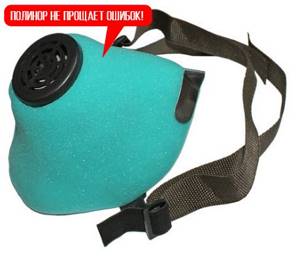
Also, consumer reviews note that Polinor insulation is quite expensive in cost, but this factor should not be decisive when choosing insulation. The speed of application and excellent characteristics will allow you to save significantly on heating the room in the future.
The material is extremely toxic, so precautions should be taken
Professionals also often prefer this material. Its light structure and ease of application can significantly reduce the time and money spent on installing insulation.
Comparison of Polinor insulation with Penoizol
Experienced builders and finishers have already dubbed Polinor insulation a complete replacement for liquid polyurethane foam. At the same time, the final price for surface insulation will be significantly lower than when using polyurethane foam. In addition, when installing polyurethane foam, it is necessary to use special equipment that must be transported, incurring additional financial losses. Using insulation in cylinders, everything is much simpler.
Experienced builders and finishers have already dubbed the foam insulation in Polynor cylinders a complete replacement for liquid polyurethane foam.
Among the characteristics are excellent vapor barrier. An analogue of polynor polyurethane foam, it transmits steam worse and condenses moisture, unlike insulation in cans. This is especially important when insulating wooden houses.
Instructions for using insulation

Installing the gun on the cylinder
- Before you begin insulating a log house, you need to thoroughly prepare the surface. To improve adhesion from the base, you need to wash off dirt, remove dust and remove oil stains with special degreasers. Any organic-based solvents - acetone, toluene and others - are suitable for these purposes.
- The insulation should be applied to a slightly moistened surface. This rule applies when thermally insulating a house made of timber or logs, as well as when spraying on other porous materials (brick, concrete, plaster). For smooth substrates (metal, glass, ceramic tiles) moistening is not required.
- An attachment is placed on the barrel of the pistol. It must be installed all the way until it clicks.
- Shake the container well before use. In this case, the activator ball located inside the container must move up and down several times.
- The supply of foam is regulated by pressing the trigger of the gun. During operation, the container must be shaken periodically.
- To speed up the polymerization process, after spraying the insulation, the surface should be slightly moistened.
- After completing insulation work, the gun must be thoroughly cleaned with a special compound.
Reviews
Those who have used this insulation system have shared their opinions. Read the reviews on forums and construction sites that we have collected:
Airat
I read reviews about Polynor. I decided to try it myself too. The base was insulated with PP. I wanted to seal the seams with Polinor. It was sprayed well, the yield of material from the cylinder was almost 100%. But it is important to pay attention to the expiration date. I blew out one balloon, then went to buy a second one in another store. I used half of it, and then some kind of sludge started to appear. I took a closer look, and it was already past the expiration date. So you need to pay attention to this. But overall, I’m happy!
Natalia
It was necessary to insulate the loggia. I decided to look through the Polynor reviews on the forums. I liked it. I bought it from Leroy, received instructions and applied it myself to 12 squares. I'm happy with the result. At the end of autumn, being on the loggia is as comfortable as being in the apartment itself. The only thing is that when spraying, foam particles fly in the air, so you need to cover everything.
Sergey
The apartment is on the first floor. I decided to insulate the floor from the basement so that the cold wouldn’t pull in from below so much. I've heard about spray-on insulation. I googled reviews about Polinor insulation and decided to try it. In about 3 hours I foamed the entire required area (about 36 sq.m.). I liked everything, I just need to ventilate it, otherwise I might collapse from the stench. It is difficult to ventilate a basement, so the speed of work was a big plus.
After using Polynor insulation, you can leave your feedback in the comments below.

